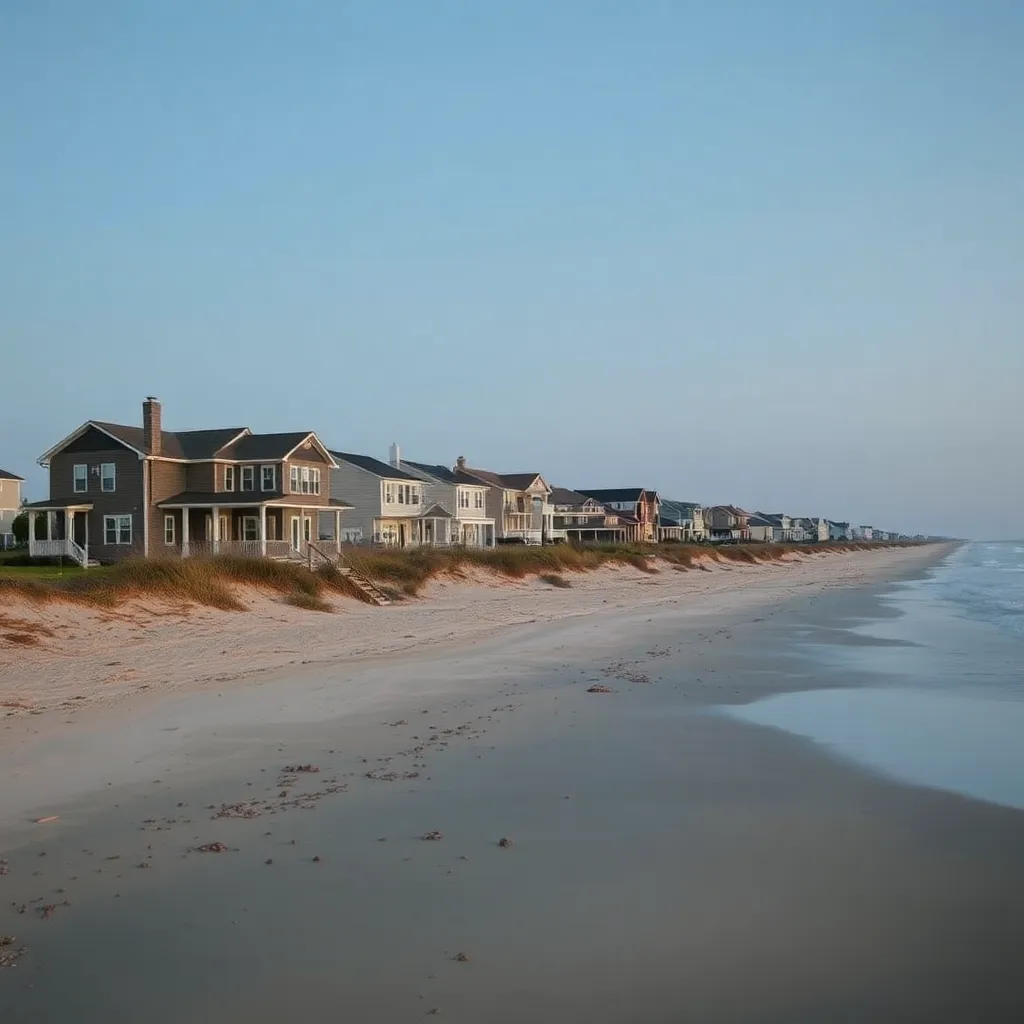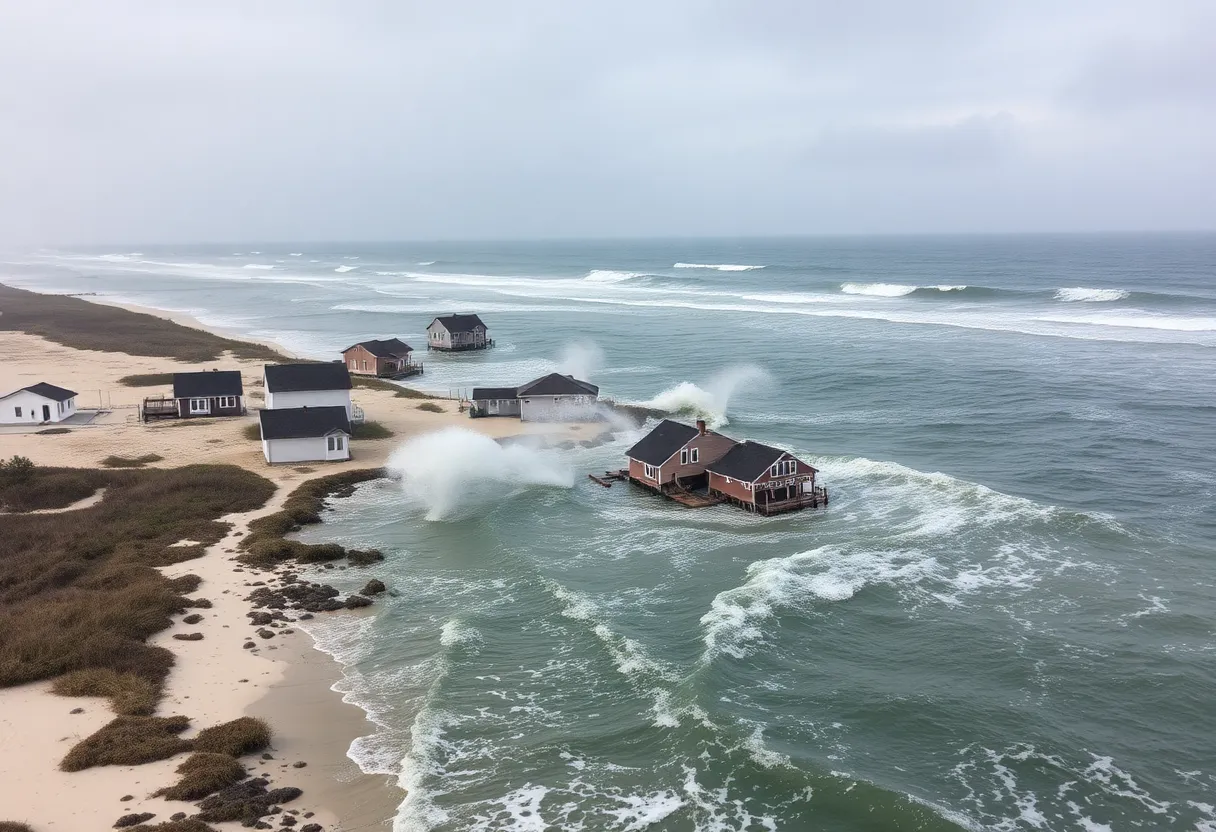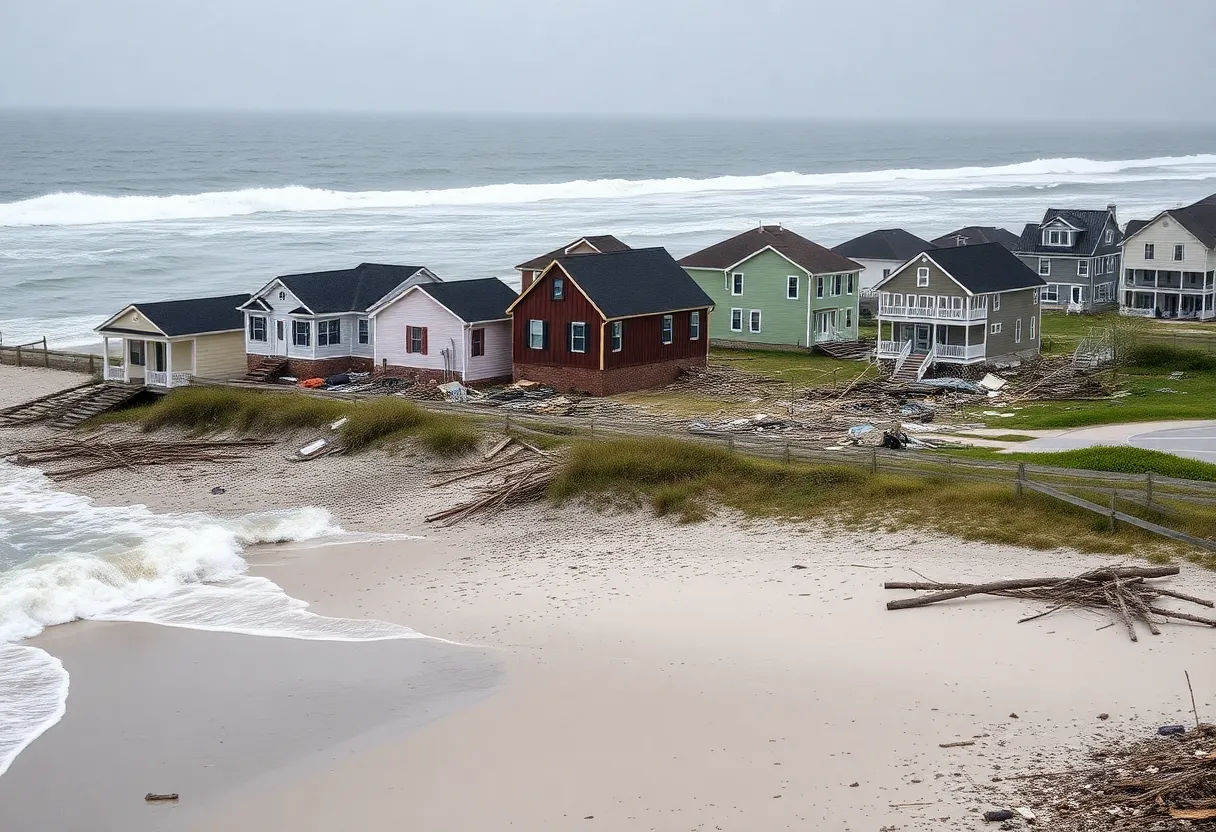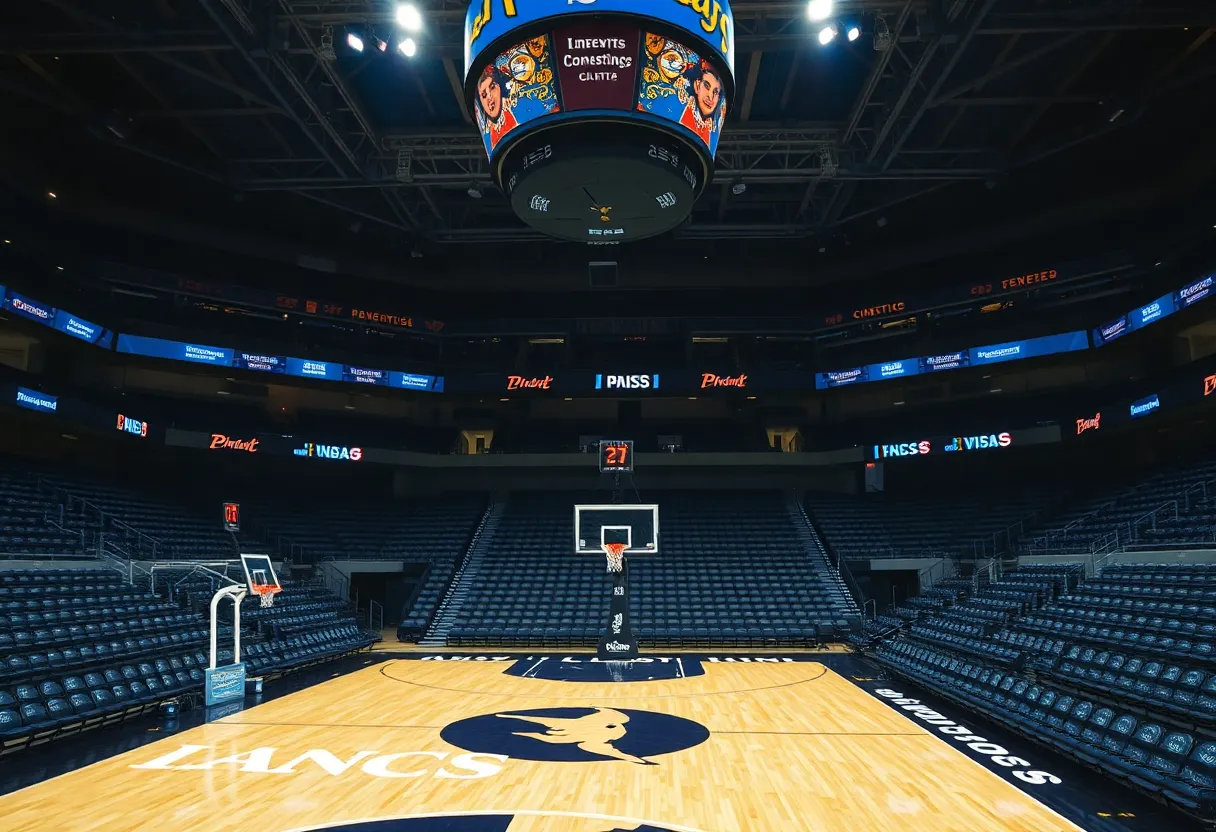Coastal Erosion Threatens Outer Banks Homes
As the sun rises over the beautiful community of Rodanthe in the Outer Banks, a sobering reality is becoming increasingly clear: coastal erosion is putting more and more beach homes at risk. Many families are facing an uphill battle as their cherished properties, once a source of joy, now stand on the brink of collapse.
A Costly Situation
This year alone, five oceanfront homes in Rodanthe fell victim to the relentless forces of nature, bringing the total number of homes that have collapsed since 2020 to ten. With the destructive waves nibbling away at the shoreline, homeowners are left scrambling for solutions. For many, the costs associated with relocating or demolishing their homes are astronomical. The average demolition bill hovers around $120,000, while trying to move a home can escalate to a hefty $150,000. It’s a challenging situation that leaves some homeowners questioning their next steps.
As the saying goes, “When it rains, it pours.” The home at 24131 Ocean Drive serves as a stark example, collapsing in May with an assessed building value of just $164,000. It’s hard to imagine the emotional toll this takes on families who invested so much into making these houses their homes.
The Relocation Challenge
Attempting to relocate often becomes a complicated process filled with red tape and limited options. With dwindling available lots and the mountain of paperwork, it can feel like an uphill battle. David Hallac, the superintendent for National Parks of Eastern North Carolina, emphasizes that relocating homes can be the best course of action. When homes lose protective measures and find themselves standing precariously on the beach, taking action quickly is vital.
“Once the house is considered a threatened oceanfront structure, which generally means there’s no protective unit in front, it’s time to move or remove it,” Hallac explained. Historically, many families have taken steps to protect their homes and avoid falling victim to coastal erosion. It’s clear that as the environment changes, so too must our responses.
Impacts on Real Estate and Community
Sadly, the implications of coastal erosion stretch beyond the families directly affected. They also cast a shadow over the local real estate market. According to Donna Creef, the government affairs director for the Outer Banks Association of Realtors, fears of erosion have been a contributing factor in the drop in real estate sales over the past year. “When potential buyers come to check out properties in places like Rodanthe and see the state of the beach, it raises immediate concerns,” she shared. “Many just walk away, taking their business elsewhere.”
This trend exacerbates the struggle for homeowners who find themselves unable to afford relocation costs or demolition. For those who may consider selling, the harsh reality is that even well-valued homes can take a deep financial hit. “For a $400,000 home, your flood insurance is going to max out at $250,000, leaving you with a loss,” Creef pointed out. As the erosion continues to take its toll, those once-proud property owners are left feeling vulnerable and uncertain about their futures.
Hope Amidst Uncertainty
While the struggle seems daunting, community members and local officials recognize the importance of coming together to address these challenges. Discussions about long-term solutions continue, and many families are banding together to share resources and strategies in navigating these turbulent waters.
As beautiful sunsets continue to paint the sky over the Outer Banks, families are holding on to hope. While the fight against coastal erosion rages on, the strength of the community shines brightly, reminding everyone that they are not alone in this battle.
In a world where nature often dictates the landscape, proactive planning, determination, and collaboration will be essential if the Outer Banks is to safeguard its homes and heritage for future generations.

Author: STAFF HERE OUTER BANKS WRITER
The OBX STAFF WRITER represents the experienced team at HEREOBX.com, your go-to source for actionable local news and information in the Outer Banks, Dare County, and beyond. Specializing in "news you can use," we cover essential topics like product reviews for personal and business needs, local business directories, politics, real estate trends, neighborhood insights, and state news affecting the area—with deep expertise drawn from years of dedicated reporting and strong community input, including local press releases and business updates. We deliver top reporting on high-value events such as the Outer Banks Seafood Festival, NC VIP Fishing Tournament, and NCBBA Red Drum Tournament. Our coverage extends to key organizations like the Outer Banks Chamber of Commerce and Outer Banks Community Foundation, plus leading businesses in tourism, retail, and hospitality that power the local economy such as Kitty Hawk Kites, Outer Banks Mall, and Avon Fishing Pier. As part of the broader HERE network, including HEREAsheville.com, HERECharlotte.com, HEREGreensboro.com, and HERERaleigh.com, we provide comprehensive, credible insights into North Carolina's dynamic landscape.





